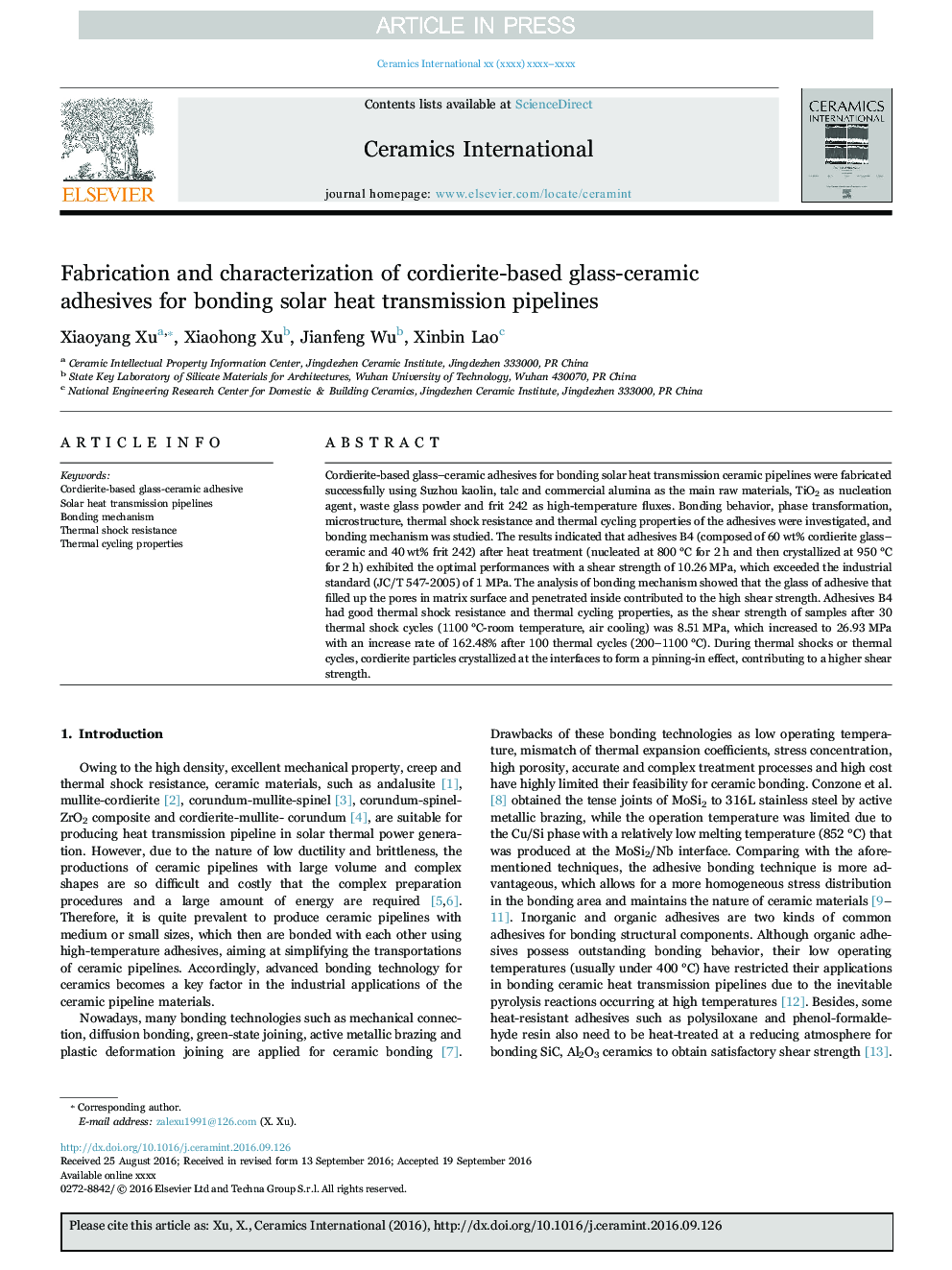| Article ID | Journal | Published Year | Pages | File Type |
|---|---|---|---|---|
| 5438123 | Ceramics International | 2017 | 8 Pages |
Abstract
Cordierite-based glass-ceramic adhesives for bonding solar heat transmission ceramic pipelines were fabricated successfully using Suzhou kaolin, talc and commercial alumina as the main raw materials, TiO2 as nucleation agent, waste glass powder and frit 242 as high-temperature fluxes. Bonding behavior, phase transformation, microstructure, thermal shock resistance and thermal cycling properties of the adhesives were investigated, and bonding mechanism was studied. The results indicated that adhesives B4 (composed of 60 wt% cordierite glass-ceramic and 40 wt% frit 242) after heat treatment (nucleated at 800 °C for 2 h and then crystallized at 950 °C for 2 h) exhibited the optimal performances with a shear strength of 10.26 MPa, which exceeded the industrial standard (JC/T 547-2005) of 1 MPa. The analysis of bonding mechanism showed that the glass of adhesive that filled up the pores in matrix surface and penetrated inside contributed to the high shear strength. Adhesives B4 had good thermal shock resistance and thermal cycling properties, as the shear strength of samples after 30 thermal shock cycles (1100 °C-room temperature, air cooling) was 8.51 MPa, which increased to 26.93 MPa with an increase rate of 162.48% after 100 thermal cycles (200-1100 °C). During thermal shocks or thermal cycles, cordierite particles crystallized at the interfaces to form a pinning-in effect, contributing to a higher shear strength.
Related Topics
Physical Sciences and Engineering
Materials Science
Ceramics and Composites
Authors
Xiaoyang Xu, Xiaohong Xu, Jianfeng Wu, Xinbin Lao,
